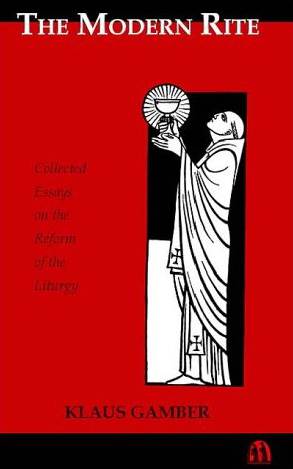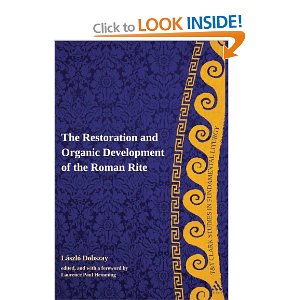Gamber – nevner norsk avisartikkel fra 1966!
Msgr. Gamber har ett kapittel i sin bok fra 1972/2002 om de moderne språk som etter konsilet i praksis erstattet latinen fullt og helt. Og han innleder sitt kapittel med flere utdrag fra det norske tidsskriftet FARMAND! Det er nokså overraskende, må jeg si – men kanskje noen lesere kan forklare hvorfor Farmand hadde artikler om latinens skjebne i den katolske messen? (Artiklene er fra april 1966 og hadde blitt oversatt fra norsk til tysk av en dame i München – og så er dette igjen oversatt til engelsk.) Her er noen utdrag fra Farmand:
… In a communication from a correspondent which appeared in issue no. 14, of the 2nd April 1966, we read:
There can be no doubt of the rising tide of astonishment amongst Catholic laypeople, at the liturgical changes and the new forms which are following in the wake of the Vatican Council. The Council did not order the removal of Latin from the Liturgy, the Decree on the Liturgy even says (in no. 36) the opposite, … In no. 54 of the decree it is recommended that the faithful should be capable of saying and singing those parts of the Liturgy in Latin, where the people join in the words. This is a clear expression in favour of the coexistence of the Latin and the vernacular forms. But in practice we see a one-sided tendency to suppress the Latin.
The Liturgy has an effect on Christians’ daily lives, and in the present situation many Catholics have become aware – if they were not already aware – that the Latin form was not so incomprehensible and impenetrable, but that it gave their religious life living nourishment and fruitfulness. Everywhere there are groups of laypeople who have asked the authorities to be allowed to keep the Latin form side-by-side with the vernacular one. But this is where the astonishment arises, for the reaction to these requests has all too frequently been either a disapproving silence or a direct prohibition of any discussion of the subject. This is despite the fact that this desire is perfectly legitimate so far as the Decree on Liturgy of the Vatican Council is concerned …
In no. 17 of the same periodical, published on the 23rd April 1966, another similar communication says:
The introduction of the vernacular is really due to a misunderstanding, and is the sign of a really provincial mentality. … The Spanish worker who went into a Catholic Church in the Ruhr used to hear a language he knew. Not any longer! …
… Finally, a few sentences from a letter to the editor: What kind of experiments have we yet to face? Will we never again be at peace? I am anxious above all about the amount of freedom which is going to be allowed to individual celebrants … Their hatred of Latin is now satisfied. But now it’s the old translations. They must be made «contemporary»… And then of course it will have to be changed every twenty years, since the language also changes. …

 Msgr. Klaus Gamber skriver i sin essaysamling «The Modern Rite» om tanken om at presten bør vende seg mot folket:
Msgr. Klaus Gamber skriver i sin essaysamling «The Modern Rite» om tanken om at presten bør vende seg mot folket: Under kan man lese en engelsk oversettelse av hele pave Benedikts julebudskap på Petersplassen i går –
Under kan man lese en engelsk oversettelse av hele pave Benedikts julebudskap på Petersplassen i går – 
 Dette sier pave Leo den Store i dagens matutinlesning:
Dette sier pave Leo den Store i dagens matutinlesning:
 Også denne boka handler om liturgien (selvsagt), dens utvikling nærmere bestemt – og jeg begynte på den i går. Tittelen er The Restoration and Organic Development of the Roman Rite, og den
Også denne boka handler om liturgien (selvsagt), dens utvikling nærmere bestemt – og jeg begynte på den i går. Tittelen er The Restoration and Organic Development of the Roman Rite, og den